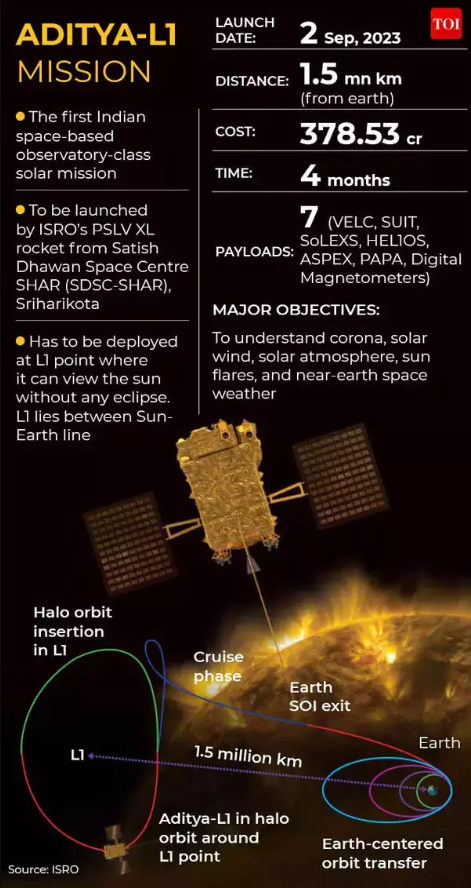Aditya-L1 mission: scientists observe a flareless coronal mass ejection
(Source – The Hindu, International Edition – Page No. – 5)
|
Topic: GS3 – Science and Technology |
|
Context |
|
Observation of a Flareless CME
-
This observation provides crucial insights into magnetic instabilities that cause both flares and CMEs.
-
The results of this study will be published in an international peer-reviewed scientific journal.
Importance of CME Monitoring
-
With the sun approaching the peak of Solar Cycle 25, CMEs are expected to become more frequent.
-
The continuous monitoring of the sun with VELC will provide valuable data for both Indian and global scientific communities.
-
The unique design of VELC helps in studying CMEs close to the sun’s surface, improving understanding of their association with solar flares.
Nature of CMEs and Solar Flares
-
Solar flares and CMEs are powerful explosions on the sun caused by magnetic reconnection.
-
Solar flares release energy in the form of electromagnetic radiation from heated plasma.
-
CMEs involve the massive ejection of plasma and magnetic fields, weighing about a trillion kilograms and moving at speeds up to 3,000 km/s.
-
The connection between CMEs and solar flares is not yet fully understood, making continuous observation essential.
|
About Aditya-L1 Mission: |
|
|
|
Practice Question: Discuss the significance of the Aditya-L1 mission in understanding solar activity and its impact on space weather. How does it contribute to scientific advancements? (150 Words /10 marks) |

